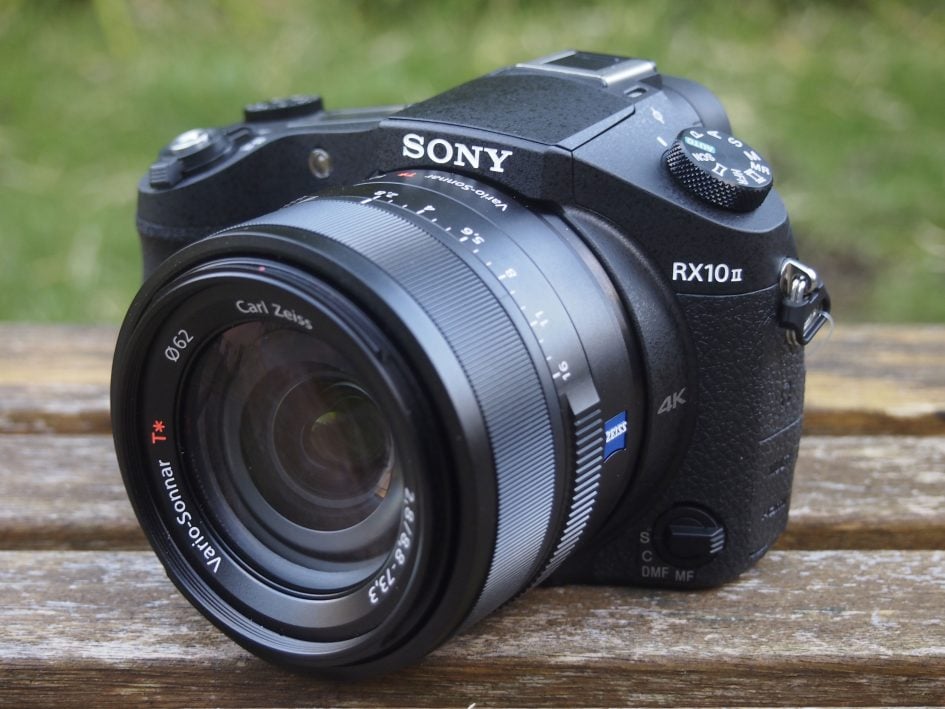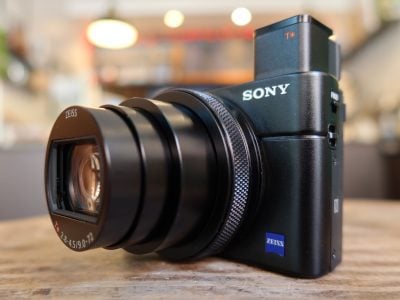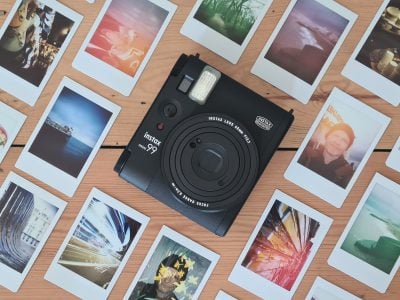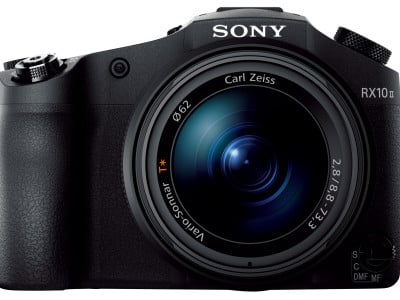Sony Cyber-shot RX10 Mark II review
-
-
Written by Ken McMahon
Verdict
The Sony Cyber-shot RX10 II is an update to the original RX10 (mark I) which retains its predecessor’s 8.3x 24-200mm constant f2.8 zoom lens. The most significant update is to the sensor, which retains the older model’s 20 Megapixel resolution as well as its 1 inch physical dimension, but introduces a new stacked architecture with embedded signal processing and DRAM. What this means in practice is 4k UHD video, faster continuous shooting, High Frame Rate video with action slowed by up to 40x as well as an electronic shutter capable of speeds up to 1/32000. Sony also claims improved low light performance with a sensitivity range that tops out at 12800 ISO and 25600 ISO in Multi Frame Noise Reduction mode.
The original RX10 had a very good electronic viewfinder, but that hasn’t stopped Sony from upgrading it and the new model sports a very capable 2.3 million dot XGA resolution OLED viewfinder that’s not only more detailed than the one it replaces (the mark 1 has a 1440 dot OLED viewfinder) but is also bigger and brighter. The RX10 II’s body retains the weatherproofing of its predecessor and the external design remains largely unchanged. As before the battery is charged in the camera, but you can now shoot when connected to an external USB power source, so you don’t have to stop shooting when the battery is drained – as long as there’s a convenient power source to plug into.
In addition to that there’s the range of features supported on the original Mark 1 and that we’ve come to expect from Sony super-zooms; Wifi and NFC, microphone and headphone jacks and Sony’s multi-interface shoe which can accommodate accessories including an XLR microphone adapter. Read on to find out more about what it has to offer and how it compares with the less expensive Panasonic Lumix FZ330 / FZ300, a camera I had on test at the same time.

If we’re going to be comparing the Sony RX10 II and Lumix FZ330 / FZ300 the first issue we need to deal with is the difference in the zoom range. This is easier than you might think, either a long telephoto is important to you, or it isn’t. There’s no question the FZ330 / FZ300 will get you a lot closer to the action than the RX10 II, but you need to ask yourself how often you take those kinds of pictures. For many, the RX10 II’s 200mm equivalent will be good enough, and you can also crop a little into the Sony’s 20 Megapixel images to match the 12 from the Lumix.
Both these models have a constant f2.8 focal ratio, but the RX10 II’s larger 1 inch sensor means it’s possible to achieve shallower depth of field effects compared with the FZ330 / FZ300 at the same focal length and distance from the subject. But if it’s shallow depth of field you want, you can get that by zooming the Lumix further – all the way to 600mm equivalent on the FZ330 / FZ300. But there’s no getting round the fact the RX10 II’s larger sensor delivers better quality images with more detail and significantly lower noise levels at high ISOs than the Lumix FZ330 / FZ300.
The RX10 II’s metal-bodied construction feels more robust than the Lumix FZ330 / FZ300, but both models are dust and splash proof. Though the RX10 II is the smaller of the two its extra weight could prove a bit of a liability if you’re carrying it around all day. The FZ330 / FZ300 has more programmable function buttons and provides greater scope for customisation, against that the RX10 can offer a clickable lens ring marked with aperture stops and a dedicated exposure compensation dial.
The RX10 II has a bigger brighter viewfinder and its screen is higher resolution, but it only folds up and down versus the more flexible and touch-sensitive, though less detailed side-hinged screen on the FZ330 / FZ300. Plus the RX10 II provides an SLR-style LCD info panel.
Both models support 4k UHD video, but the FZ330 / FZ300 leverages that with a range of 4k shooting modes including the latest innovation – Post Focus – allowing you to set the focus after taking the shot. The RX10 II is no slouch when it comes to burst shooting though, achieving the claimed 14fps in my tests. It also outperforms the FZ330 / FZ300 with a range of high frame rate (slow motion) video modes topping out at 1000fps corresponding to a 40x slow down.
There’s not much to choose between them when it comes to Wifi features, except to say that the RX10 II has the advantage of NFC for hassle-free connections with your smartphone and also supports downloadable apps for adding new and improved features.
The biggest difference though is the cost, with the RX10 II carrying a price tag around double that of the FZ330 / FZ300 thanks to its larger sensor, extra slow motion capabilities and pro-audio connectivity. If you’ve got the money you’ll get a more pro-oriented camera with superior handling that produces visibly better quality images, especially in low light. About the only downside is the comparatively limited zoom range – not really a significant enough factor to stand in the way of a Highly Recommended award if the feature-set meets your needs. Ultimately the RX10 II is a very powerful and flexible camera for high-end videographers.
If on the other hand you’re after a more consumer-focused super-zoom on a lower budget, you’re unlikely to be disappointed with the Lumix FZ330 / FZ300. See my Panasonic Lumix FZ330 / FZ300 review for more details. While the simultaneous testing of the FZ330 / FZ300 and RX10 II made for an interesting comparison though, it’s fair to say many of the people considering the Sony will be comparing it against other 1in-class options. Of these, the Panasonic Lumix FZ1000 is the most serious rival with a viewfinder, 4k video and the same size sensor, albeit from a previous generation. The FZ1000’s 25-400mm f2.8-f4 zoom may slow down a stop at the long-end compared to the RX10 II, but by this point it’s enjoying double the focal length – its key benefit. Importantly, thanks to gradual discounting since launch, the FZ1000 also now costs only around two thirds the price of the RX10 II, making it a bargain in the 4k / 1in super-zoom market. As such the FZ1000 is an ideal super-zoom for someone who wants the benefit of a 1in sensor and a longer zoom range but doesn’t need the higher-end pro features of the RX10 series. See my Lumix FZ1000 review for more details. But once again if you’re a serious videographer who’ll exploit the advanced slow motion capabilities or need pro audio support (headphone jack and optional XLR connectivity), then you’ll love the RX10 II.




